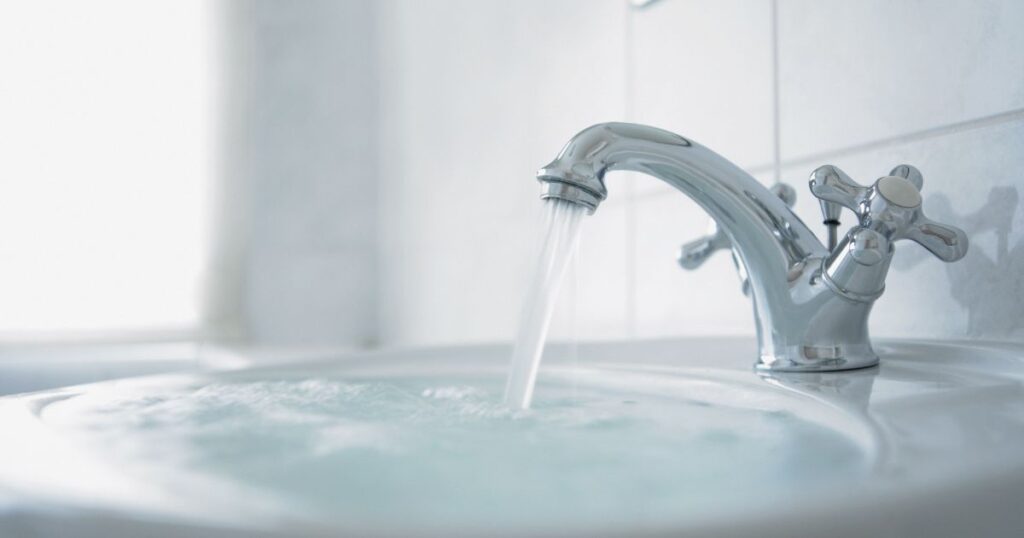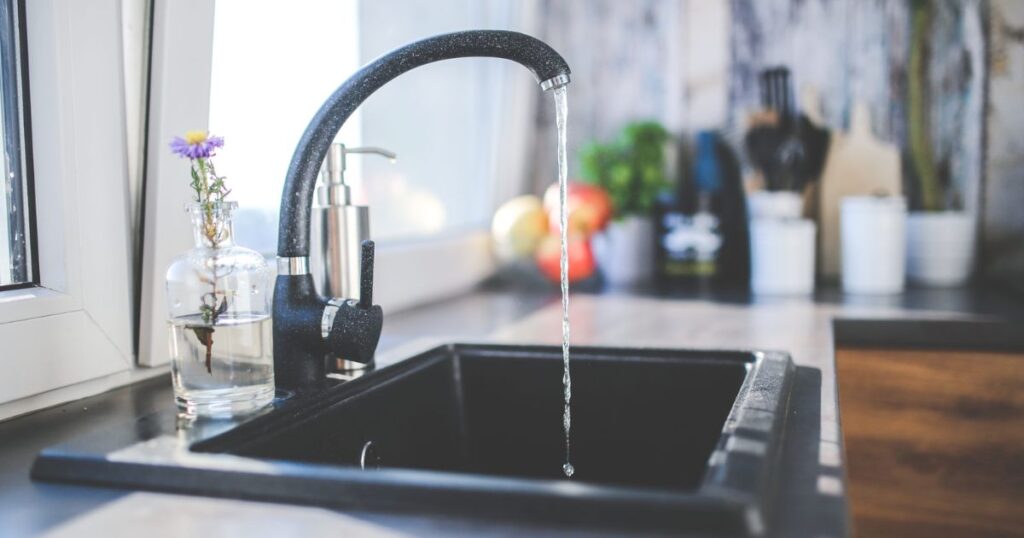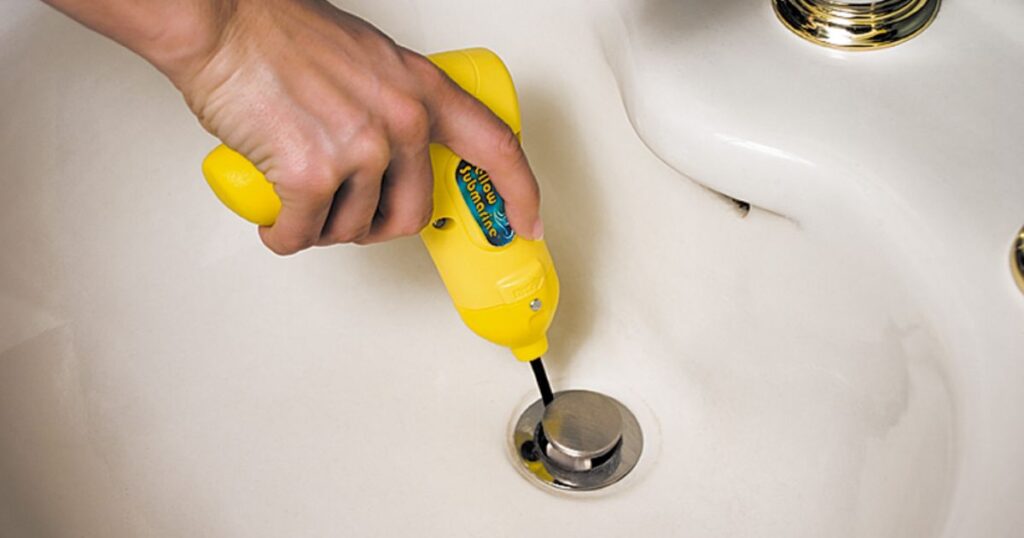Are you tired of standing over a slow-draining bathroom sink, waiting for the water to disappear? Unclogging a bathroom sink can be a frustrating task, but fear not! This comprehensive guide explores the common causes of bathroom sink blockages and provides step-by-step instructions on unclogging a bathroom sink using various methods. Whether it’s hair buildup, soap scum, or foreign objects causing the obstruction, we’ve got you covered. Let’s dive in!
Why Your Bathroom Sink is Not Draining
Hair Buildup
One of the most common culprits behind a clogged bathroom sink is hair buildup. Over time, strands of hair can accumulate in the drain, trapping other debris and causing a blockage. To prevent hair buildup, consider installing a drain strainer or regularly removing hair from the drain using a drain snake.
Soap Scum
Another common cause of bathroom sink clogs is soap scum. When soap combines with hard water minerals, it can form a sticky residue that coats the inside pipes, leading to blockages. To prevent soap scum buildup, use a mild abrasive cleaner or vinegar solution to clean the sink and drain regularly.
Foreign Objects
Small objects such as jewelry, toothpaste caps, or cotton swabs can accidentally fall into the sink and become lodged in the drain, causing a blockage. To prevent foreign objects from causing clogs, be mindful of what you’re placing near the sink and avoid allowing small items to fall into the drain.
Mineral Buildup
In areas with hard water, mineral buildup can be a common cause of bathroom sink clogs. Minerals such as calcium and magnesium can accumulate inside pipes over time, reducing water flow and eventually leading to blockages. Consider installing a water softener or using descaling agents to prevent mineral buildup in your pipes.
Damaged or Collapsed Pipes
Sometimes, a clogged bathroom sink may be due to damaged or collapsed pipes. This is less common but can occur due to age, corrosion, or external factors such as tree roots invading underground pipes. If you suspect your sink’s drainage issues are due to damaged pipes, it’s best to consult a professional plumber for assistance.
How to Unclog Bathroom Sink with Boiling Water

Preparation
Before attempting to unclog a bathroom sink with boiling water, removing standing water from the sink and clearing debris near the drain opening is essential.
Safety First
It’s essential to exercise caution when using boiling water to unclog a bathroom sink. Ensure that your sink’s material can withstand high temperatures, and always wear protective gloves to avoid burns.
Boil the Water
Bring a kettle or pot of water to a rolling boil on the stove.
Slow Pour
Carefully pour the boiling water directly into the bathroom sink drain, taking care not to splash yourself or spill water onto surrounding surfaces.
Wait and Test
Allow the boiling water to work its magic for several minutes, then test the sink drain with running water to see if the blockage has cleared. If necessary, repeat the process.
Prevention
To prevent future bathroom sink clogs, consider flushing the drain with boiling water monthly as part of your regular maintenance routine.
How to Unclog Bathroom Sink Vinegar and Baking Soda: A Dynamic Duo
Gather Your Materials
Before unclogging a bathroom sink with vinegar and baking soda, gather the following materials: baking soda, vinegar, a measuring cup, and a kettle or pot for boiling water.
Prepare the Sink
Remove standing water from the sink and clear debris near the drain opening.
Apply Baking Soda
Pour approximately 1/2 cup of baking soda into the sink drain, ensuring it goes down the drain opening.
Introduce the Vinegar
Next, pour approximately 1/2 cup of vinegar into the drain, causing a fizzing reaction with the baking soda.
Let it Sit
Allow the vinegar and baking soda to sit in the drain for at least 30 minutes, allowing it to break down and dissolve any blockages.
Flush with Boiling Water
After the mixture has had time to work, carefully pour boiling water into the drain to remove any remaining debris.
Test the Drain
Finally, test the bathroom sink drain with running water to ensure the blockage has cleared.
Regular Maintenance
To prevent future bathroom sink clogs, consider using the vinegar and baking soda method for monthly maintenance.
How to Unclog Bathroom Sink With a Plunger
Choose the Right Plunger
When unclogging a bathroom sink with a plunger, it’s essential to use the correct type of plunger—a flat-bottomed plunger designed for sinks rather than a cup-shaped plunger used for toilets.
Prepare the Sink
Remove standing water from the sink and clear debris near the drain opening.
Add Water
Add enough water to cover the bottom of the plunger cup, creating a seal around the drain opening.
Position the Plunger
Place the plunger over the drain opening, ensuring that it forms a tight seal against the sink surface.
Plunge Away
With a firm grip on the handle, plunge the sink vigorously up and down for several seconds, creating suction to dislodge the blockage.
Test the Drain
After plunging, test the bathroom sink drain by running water to see if the blockage has been cleared.
Clean Up
Clean the sink and plunger once the drain is straightforward to remove any debris or residue.
Preventive Measures
To prevent future bathroom sink clogs, consider using a drain strainer to catch hair and debris before it enters the drain.
How to Unclog Bathroom Sink Using a Drain Snake
Understanding the Drain Snake
A drain snake is a flexible tool designed to navigate through pipes and dislodge blockages. It typically consists of a long, flexible cable with a hook or auger at one end.
Preparation
Clear the workspace before using a drain snake to unclog a bathroom sink and gather the necessary materials, including the drain snake and gloves.
Locate the P Trap
Identify the location of the P trap—the curved section of pipe beneath the sink—and prepare to remove it to access the drain.
Remove the P-Trap
Using a wrench or pliers, carefully remove the nuts or connectors, securing the P trap in place and allowing you to access the drain pipe.
Deploy the Drain Snake
Insert the drain snake into the bathroom sink drain and feed it slowly into the pipe, rotating it as needed to navigate around bends and obstructions.
Retrieve the Clog
Once the drain snake encounters resistance, feed it into the pipe until you reach the blockage. Use the hook or auger to grasp and remove the c
log.
Reassemble and Test
After removing the clog, reassemble the P trap and secure it in place, then test the bathroom sink drain to ensure that the blockage has been cleared.
Clean Up
Clean the workspace and tools once the drain is straightforward to remove any debris or residue.
Tips for Keeping Your Bathroom Sink Clear
The Perils of Hair in the Drain
Hair buildup is one of the leading causes of bathroom sink clogs. Consider installing a drain strainer to catch hair before it enters the pipe and prevents hair from accumulating in the drain.
Prevention
Regular maintenance is vital to preventing bathroom sink clogs. Consider flushing the drain with boiling water or using vinegar and baking soda monthly to keep it clear of debris.
The Importance of Cleaning the Sink’s Stopper
The sink stopper can trap hair and debris, contributing to clogs. Regularly remove the stopper and clean it to prevent buildup.
Regular Maintenance
Consistent maintenance is essential for keeping your bathroom sink clear of clogs. Incorporate unclogging methods into your cleaning routine to prevent blockages before they occur.
Using Grates or Screens in High-Use Sinks
Consider installing grates or screens to catch debris before it enters the drain in sinks with heavy use, such as those in shared bathrooms or households with multiple occupants.
Installation
Grates or screens are easy to install and can significantly reduce the likelihood of bathroom sink clogs. Place them over the drain opening and remove them periodically to clean.
Top 5 Tips from Experts on How to Unclog Bathroom Sinks

Boiling Water Method
Experts recommend using boiling water to unclog a bathroom sink as it effectively breaks down grease, soap scum, and other debris.
Vinegar and Baking Soda
Combining vinegar and baking soda creates a fizzing reaction that can help dislodge clogs and eliminate odors from the drain.
Use a Plunger
A plunger is a versatile tool that can be used to unclog a bathroom sink quickly and effectively. Choose a flat-bottomed plunger for sinks rather than a cup-shaped plunger used for toilets.
Drain Snake
For more stubborn clogs, experts recommend using a drain snake to remove the blockage from the pipe physically.
Wet-Dry Vacuum
Sometimes, a wet-dry vacuum can unclog a bathroom sink by creating suction to dislodge the blockage.
Read More Posts
How Long Is House Inspection Good For
How Long Will It Be On House Arrest
FAQs
What is the easiest way to unclog a bathroom sink?
The easiest way to unclog a bathroom sink is by using boiling water. Boil water in a kettle or pot, then carefully pour it directly down the drain. The hot water helps to dissolve and flush away the blockage, restoring proper drainage. This method is effective for minor clogs caused by substances like soap scum and grease.
How do you unblock a bathroom sink drain?
You can use a combination of vinegar and baking soda to unblock a bathroom sink drain. Start by pouring about 1/4 cup of baking soda down the drain, followed by 1 cup of vinegar. Allow the mixture to fizz and bubble for about 15 minutes, then flush the drain with hot water. This chemical reaction helps break the blockage, clear the drain, and restore proper flow.
How do you clear a slow-draining bathroom sink?
A simple and effective way to clear a slow-draining bathroom sink is by using a plunger. First, remove any standing water from the sink. Then, place the plunger over the drain, ensuring a tight seal. Pump the plunger up and down vigorously for about 30 seconds to create suction and dislodge the blockage. Finally, run hot water to flush out any remaining debris.
What will dissolve hair in a drain?
One effective solution for dissolving hair in a drain is to use a commercial drain cleaner specifically designed for hair removal. These cleaners typically contain powerful enzymes or chemicals that break down hair and other organic matter, allowing it to be flushed away. Alternatively, you can try a homemade solution of vinegar and baking soda, which can also help to dissolve hair and clear the drain.
Conclusion
In conclusion, dealing with a clogged bathroom sink can be a frustrating experience, but with the proper knowledge and tools, you can tackle the problem head-on. Whether you opt for the boiling water method, vinegar, baking soda, a plunger, a drain snake, or a wet-dry vacuum, plenty of effective unclogging methods are at your disposal.
Understanding the common causes of bathroom sink clogs and taking preventive measures can keep your sink clear and flowing smoothly for years. Remember, regular maintenance is critical to a happy and healthy bathroom sink!







